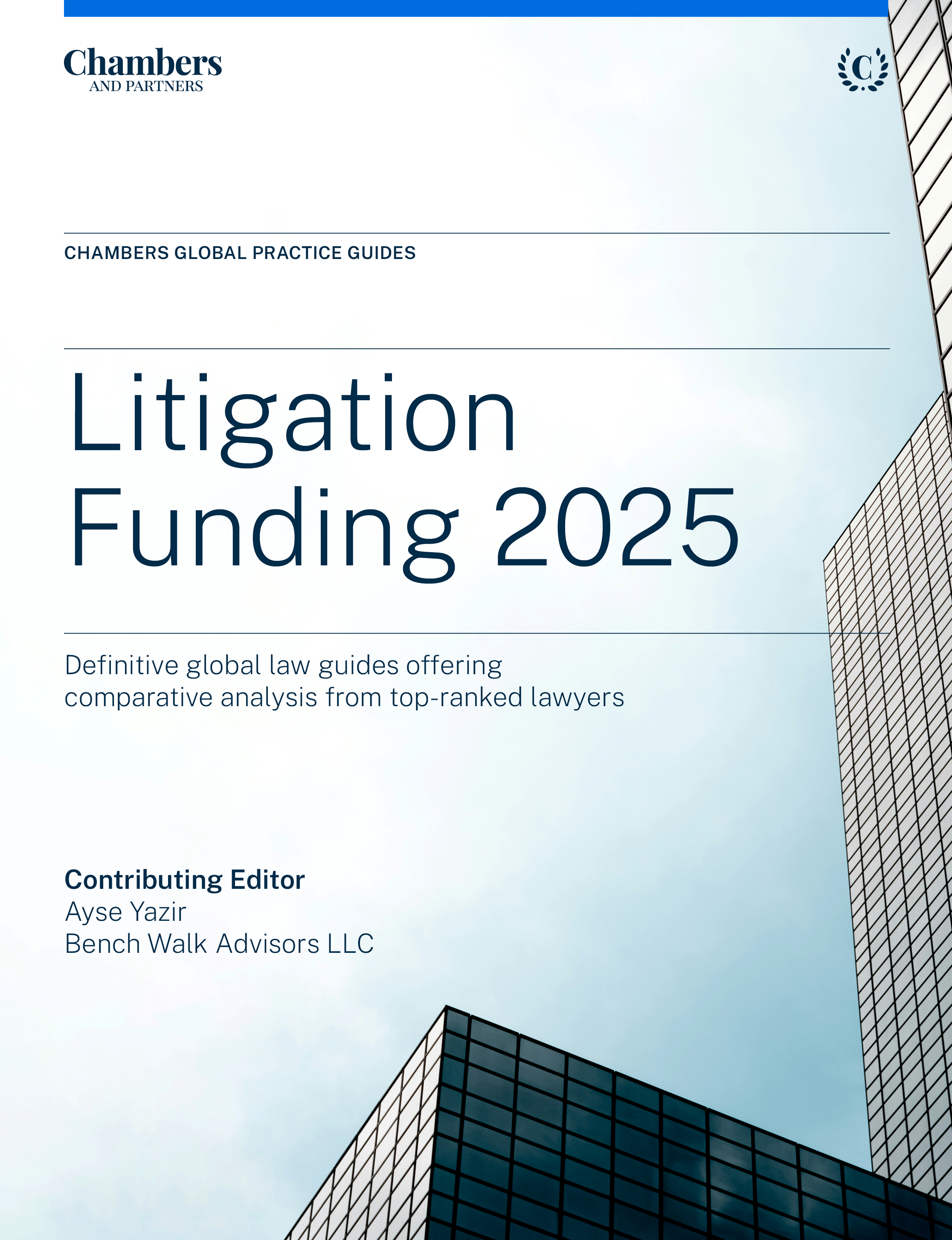
Litigation Funding 2025
The Litigation Funding 2025 guide covers key jurisdictions across Europe, the United States and the Asia-Pacific region. The guide provides the latest information on the legal/regulatory framework for litigation funding, adverse costs and insurance, alternative fee structures, fee sharing, non-lawyer ownership of equity in law firms, and domestic and cross-border tax issues in relation to funding.
Last Updated: March 04, 2025
Compare law and practice by selecting locations and topic(s)
Select Locations

Select Topic(s)

Please select at least one location and one topic to use the compare functionality.
Litigation Funding: A Global Overview
The litigation funding industry has undergone remarkable changes in the past year, expanding into a global market valued at approximately USD17.5 billion. By 2037, this figure is projected to soar to USD67.2 billion, with an anticipated annual growth rate of 11.1% starting in 2025 (Research Nester). These numbers highlight the growing importance of third-party funding in providing access to justice and helping clients structure their balance sheets more efficiently in the current economic turmoil. The growth is primarily attributed to the rising demand in emerging markets, with the industry projected to reach USD18.9 billion by 2025.
This is not just about numbers ‒ it is a shift in how legal disputes are financed. More people and businesses are relying on litigation funders to offset the steep costs of drawn-out legal battles and engage with the best legal team to represent them. Thus, this allows claimants without deep pockets to pursue their cases and sustain them over a long time without needing to drain company resources. At the same time, sophisticated investors are actively entering the sector, attracted by its strong profitability.
A critical issue in 2024 was the ongoing uncertainty arising from the Supreme Court’s 2023 decision in the PACCAR case. The ruling cast doubt on the enforceability of many third-party funding agreements, creating widespread uncertainty. Agreements once thought secure were called into question, leaving funders and claimants navigating unfamiliar waters. The effects have been clear: the number of new Commercial Court claims in 2023 dropped sharply by 37%, falling to just 470 ‒ the lowest figure in over a decade, according to Solomonic’s 2024 review. Group actions also saw a 23% decline compared to recent averages, highlighting the significant chilling impact of the PACCAR ruling. Adding to the turbulence, the UK government has postponed reintroducing the Litigation Funding Agreements (Enforceability) Bill, opting to wait for the Civil Justice Council’s review of the funding market. This delay has left a cloud hanging over the London market.
While these challenges persist, there is a noticeable rise in ESG-related disputes and funding inquiries. Investors are increasingly drawn to opportunities that deliver both financial returns and meaningful social impact. Funders are supporting cases that tackle corporate wrongdoing, environmental harm, and injustices affecting marginalised communities. This alignment with ESG principles reflects a growing belief that profitability and positive societal change can go hand in hand. By diversifying their portfolios, funders are opening doors for more claimants to seek justice while attracting socially conscious investors.
Another area of rapid development is the intersection of litigation funding and insurance. In the USA, products like judgment preservation insurance are gaining traction, providing protection against unfavourable appellate outcomes. These innovations offer a safety net for funders and litigants alike, reducing financial risks in an unpredictable legal environment. While these tools add complexity to the funding landscape, they also create new opportunities. Navigating them, however, requires careful legal and financial guidance.
As the industry grows, ethical concerns have come into sharper focus. Questions about funder involvement in settlement discussions have sparked debate over potential conflicts of interest. If funders exert too much influence, their interests could clash with those of claimants, raising serious ethical questions. Ensuring a balance between providing financial support and respecting claimant autonomy is critical to preserving trust in the system.
Shifting ownership models in law firms have also emerged as a noteworthy trend. Traditionally, law firms were owned exclusively by lawyers, but jurisdictions like the UK, Australia and parts of the USA are loosening these restrictions. This change responds to the need for fresh capital as firms invest in technology and expand their offerings to meet evolving client needs. Allowing non-lawyer ownership and external investment has opened new doors, enabling firms to take on more complex cases and better serve clients who might otherwise be priced out of the legal system. Hence, it has created new demand for funding as entrepreneurial lawyers and forward-thinking law firms seek to leverage this additional capital.
Transparency in third-party funding is also becoming a defining feature of the industry. Arbitration centres worldwide are now requiring parties to disclose any existing third-party funding and the identity of the funder. Some of these centres even go further and require funded parties to disclose the terms of funding and their litigation funding agreements. Similar trends are emerging in commercial litigation in the USA and the EU. For instance, Louisiana recently enacted a law requiring litigation funders to disclose any financing from foreign entities considered “of concern” and barring them from interfering with the outcomes of cases. The legislation also stipulates that funding agreements must be accessible during civil litigation.
Despite the obstacles, litigation funding is firmly on a path of growth and innovation. Its evolution shows an industry that is not only adapting to challenges but also shaping itself to meet the demands of a changing legal and social landscape. With its focus on access to justice, responsible investing and creative risk management, litigation funding is poised to play a vital role in the future of legal industry.
